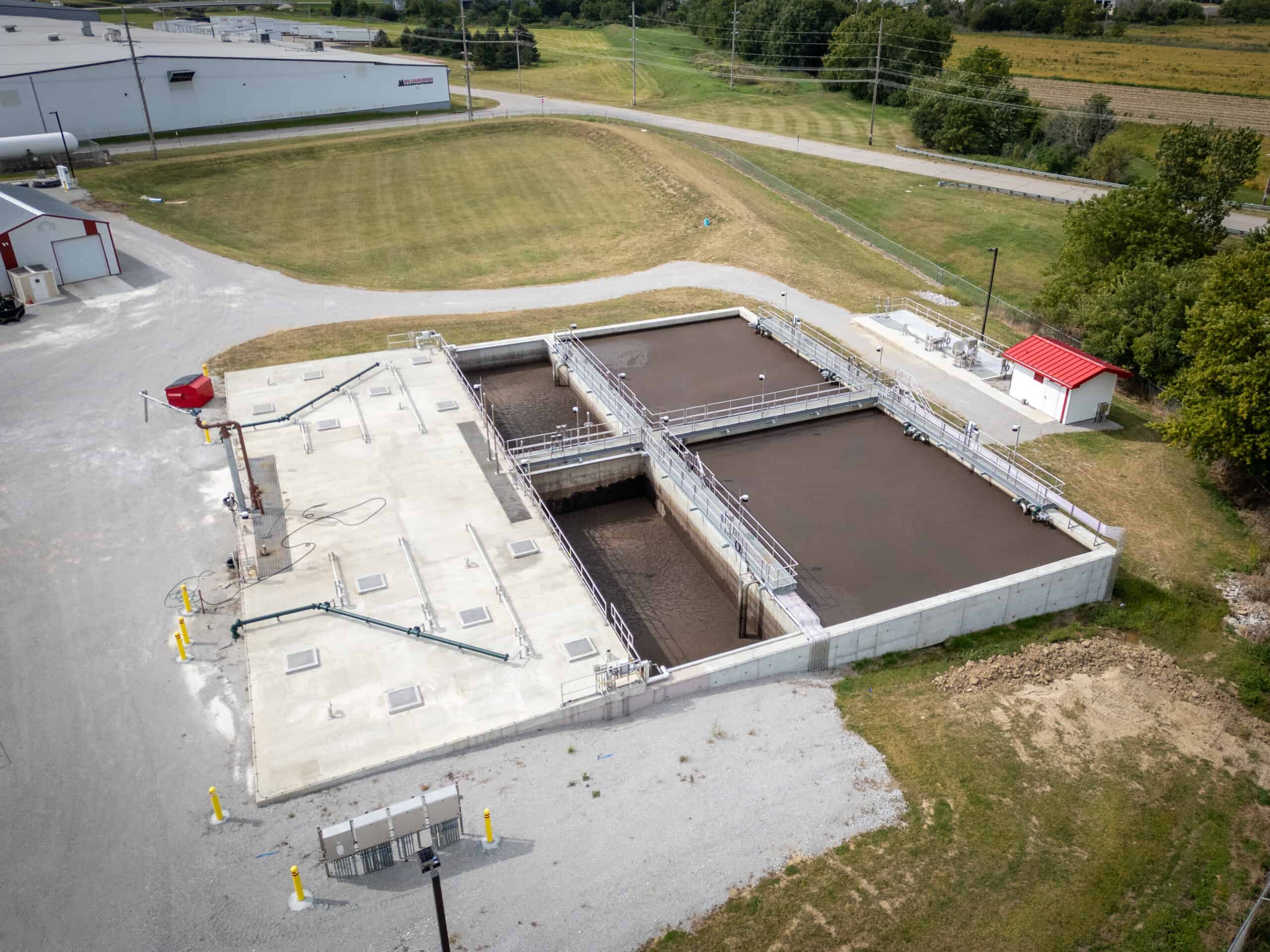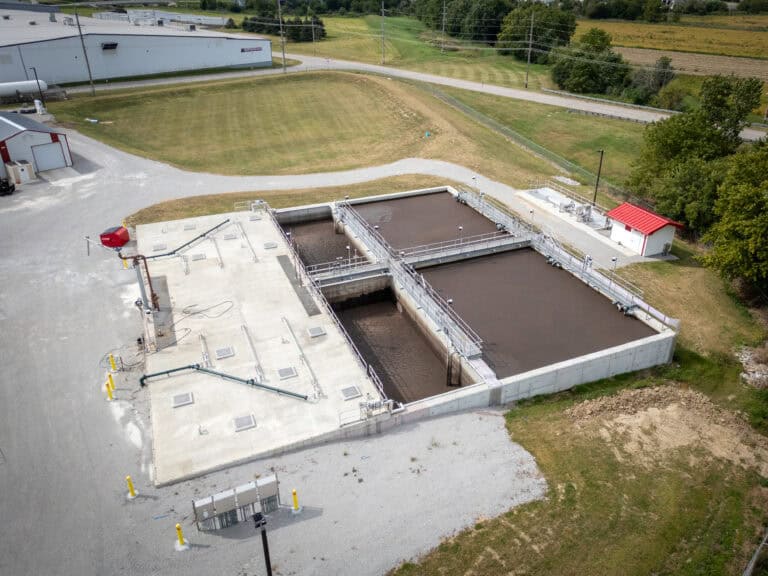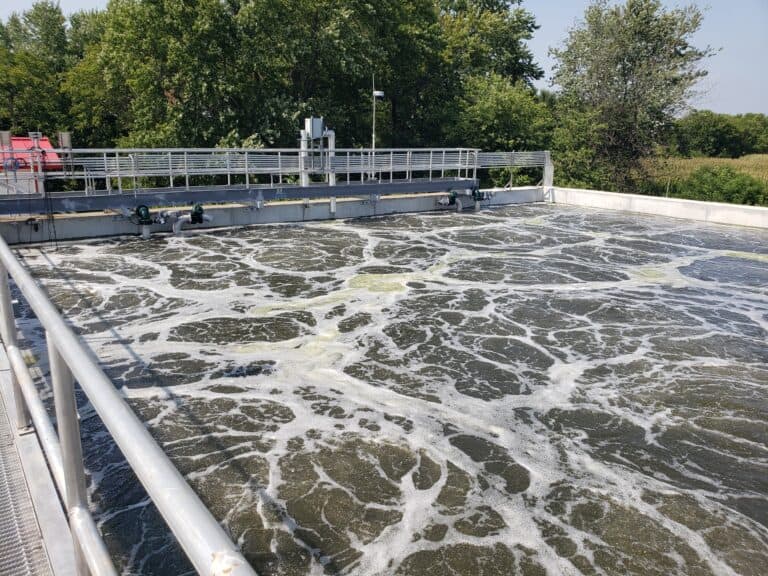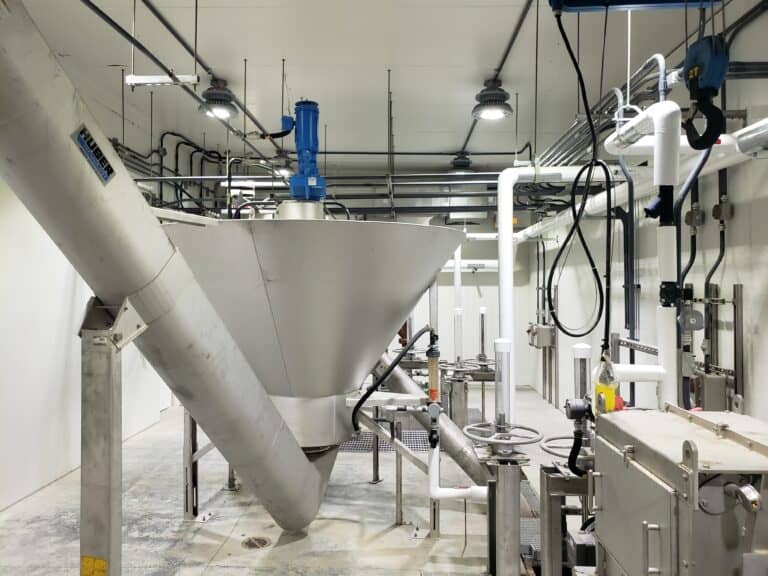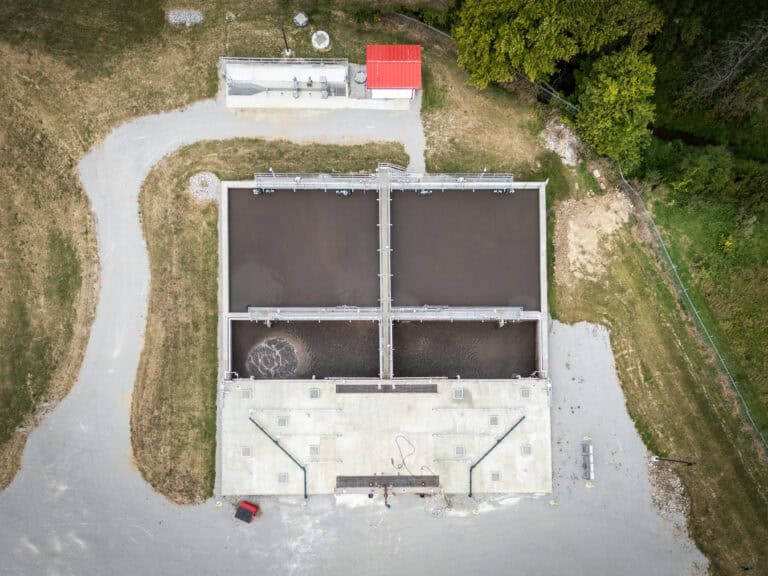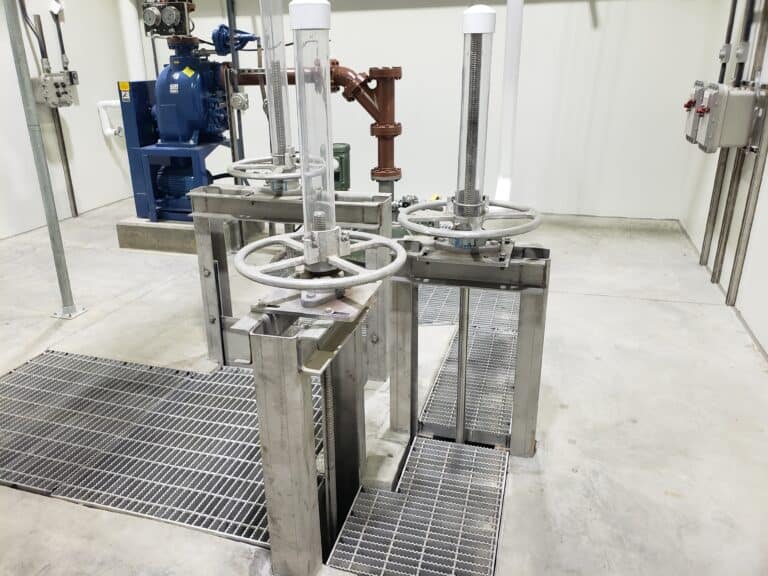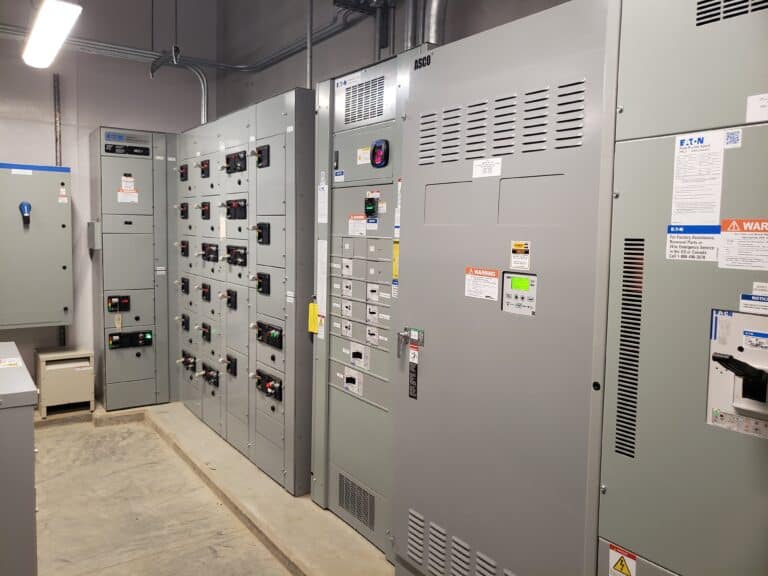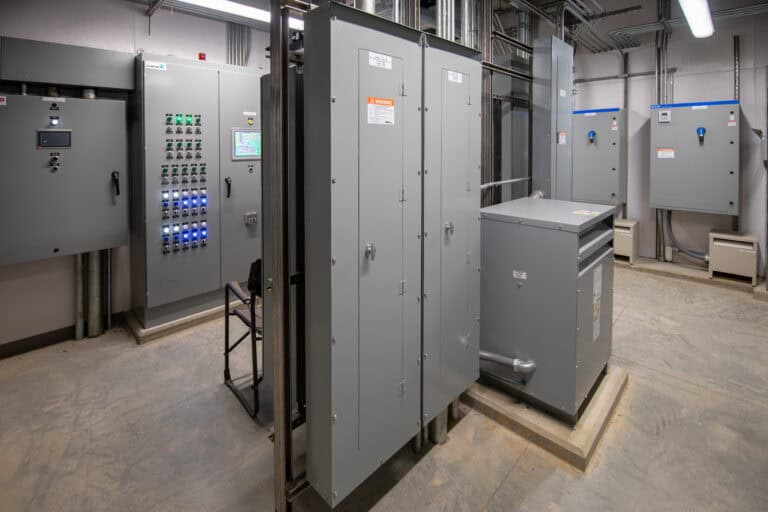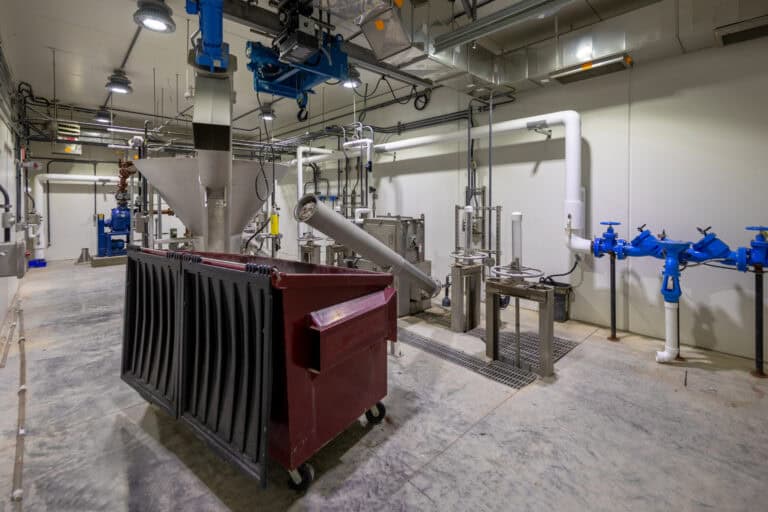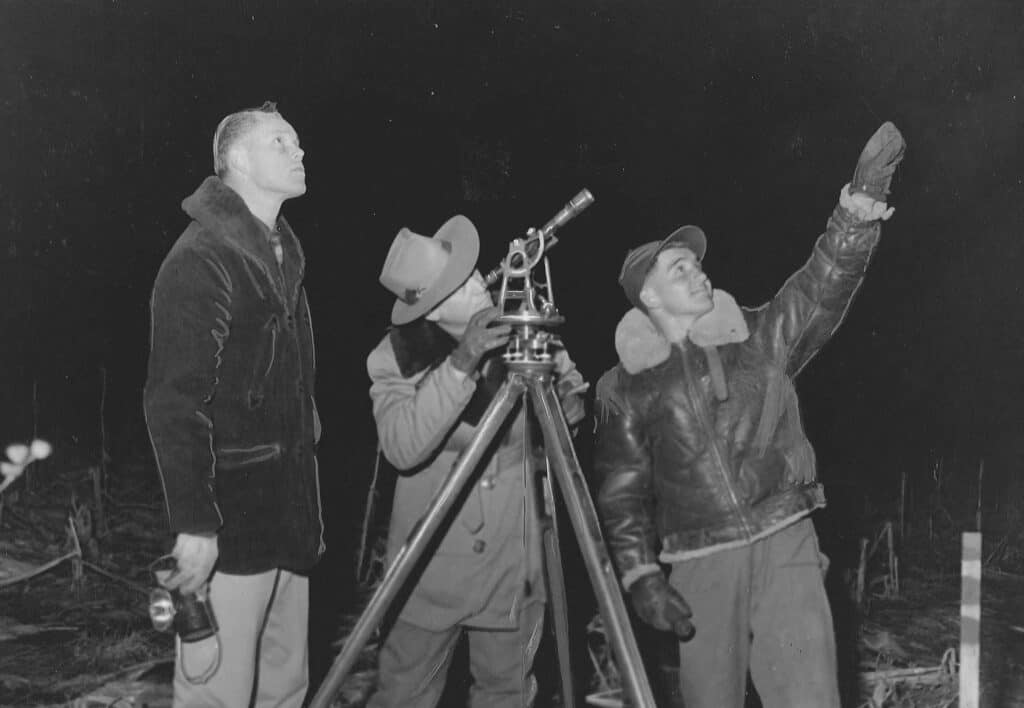Challenge: The City of Williamsburg sought to replace its existing wastewater treatment plant (WWTP) which was more than 50 years old, undersized, and incapable of consistently meeting new compliance regulations for effluent discharge limits. The new National Pollutant Discharge Elimination System (NPDES) permit included more stringent limits for ammonia, dissolved oxygen, pH, E. coli, and various metals.
Williamsburg’s proximity to Interstate 80 and the Cedar Rapids/Iowa City corridor has resulted in a growing population within the community. The improvements to the WWTP would also need to accommodate the community’s growth while also considering future provisions for nutrient removal as part of Iowa’s Nutrient Reduction Strategy for larger communities.
Solution: HR Green designed a 1.35 million gallon per day (MGD) Sequencing Batch Reactor (SBR) Wastewater Treatment Plant (WWTP) and incorporated peak flow equalization, mechanical screening and grit removal, effluent re-aeration, ultraviolet disinfection, and an effluent reuse system. Planning, design, and construction costs were funded through the State Revolving Fund (SRF) program.
Preliminary Planning
An Antidegradation Alternatives Analysis and Facility Plan Reports were prepared, evaluating different technologies based on their level of treatment capability, ease of operation, life cycle cost, and future expansion and nutrient removal capabilities. Various treatment components were considered, including provisions for screening, grit removal, primary/secondary treatment, disinfection, and effluent re-aeration. HR Green also assisted the City in receiving funding for the project as part of the Planning and Design (P&D) loan through the State Revolving Fund (SRF) loan to cover costs for the up-front planning, design, and construction phases of the project.
Public and Operational Staff Involvement
To gain public support for the project, HR Green facilitated a presentation at a public informational meeting to receive public input on the proposed project. HR Green also met regularly with the City’s water and wastewater committee, toured neighboring wastewater treatment plants, and attended the Water Environment Federation’s Technical Exhibition and Conference (WEFTEC) with the Public Works Director and Plant Operator to witness the operation of the proposed equipment and observe the performance of the proposed treatment technology.
Design
The existing storage pond was converted to an equalization pond for peak flow attenuation by expanding the pond footprint while also raising the bottom elevation above the groundwater table to limit groundwater seepage into the pond. A return equalization lift station was designed to pump wastewater from the equalization pond into the preliminary treatment Headworks Building, constructed as part of the new WWTP facilities. This equalization and attenuation allow for the WWTP to treat high capacity wet weather events without oversizing the facility. The peak flow attenuation process is completely automated as part of the new plant control system.
The new facility design includes a Headworks Building with a dedicated room for a mechanical screen and washing press, manual bypass screen, grit removal vortex, and grit classifier. The screening and grit washing mechanisms were chosen to selectively remove suspended materials and other inorganics, which improve downstream biological processes in the activated sludge SBRs. The Headworks Building processes include provisions to clean the waste stream sufficiently to allow for potential reuse as part of City maintenance projects.
An Integrated Surge Anoxic Mix (ISAMTM) Sequencing Batch Reactor was selected for primary and secondary treatment, which included built-in anaerobic digestion, aerobic sludge storage, and both anoxic and aerobic tanks. This treatment process allows for future nutrient removal to be incorporated if required by a future permit. The new design incorporated ultraviolet disinfection, effluent re-aeration, and non-potable water reuse, which is used for wash water in the screening and grit removal processes.
Construction
HR Green provided construction administration and part-time construction observation throughout the construction phase. HR Green staff partnered with the City inspector to observe construction and provide direction to the contractor. An emphasis on value engineering and close coordination minimized costly change orders. The total change order cost during construction amounted to less than 1% of the construction contract. Despite major delays in the procurement of equipment, the WWTP was commissioned approximately eight months prior to the NPDES permit compliance deadline.
Benefit: The new WWTP has been operational since August 2023 and has successfully maintained compliance with the City’s NPDES limits. The plant is achieving consistent Total Nitrogen removal (although not currently required), and only a few modifications would be necessary to achieve Total Phosphorus removal if needed in the future. Additionally, the effluent reuse system will reduce operational costs to the City by an estimated $50,000 per year in potable water consumption charges and free-up capacity for the new reverse osmosis Water Treatment Plant.
